近日,福州大学倪莉教授团队在国际期刊《Current Research in Food Scinence》发表题为“Effects of the microbial community on the formation of volatile compounds and biogenic amines during the traditional brewing of Hongqu rice wine”的研究性论文。该研究旨在探究红曲米酒传统发酵过程中微生物群落对挥发性化合物和生物胺形成的影响。

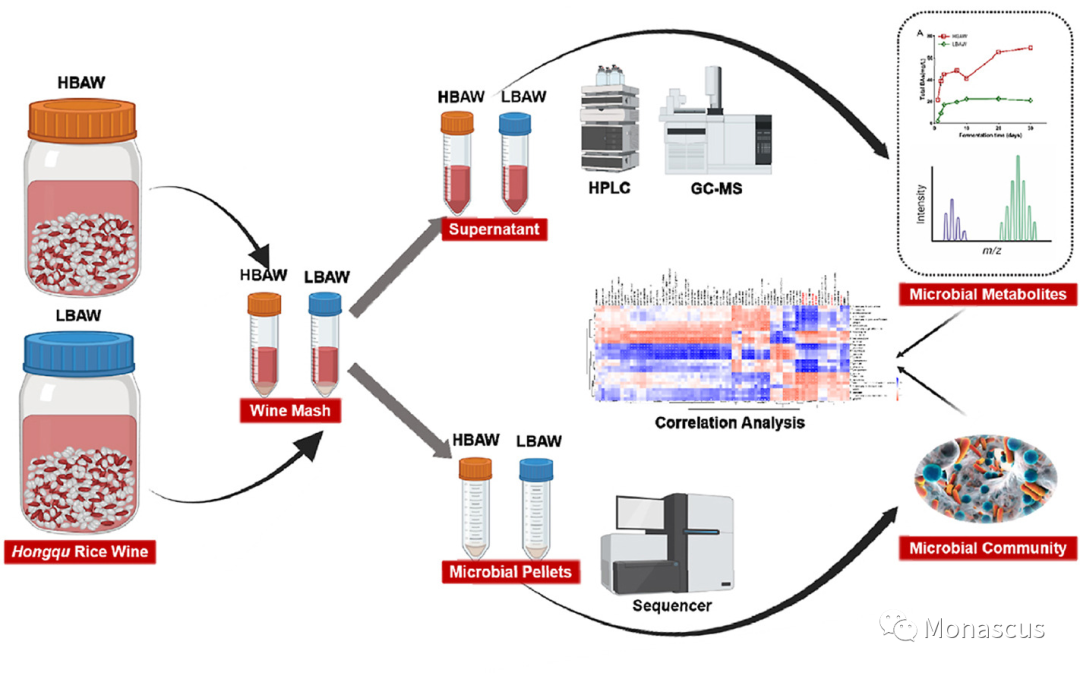
Abstract
作为中国米酒(黄酒)的典型代表,红曲米酒以其色泽红润、口感醇厚和香味浓郁而闻名。然而,由于开放的酿造环境和传统的发酵技术,传统酿造的红曲米酒存在一定的安全风险,如一定量的生物胺。本研究系统地研究了高、低生物胺含量(LBAW和HBAW)的两种红曲米酒在传统酿造过程中微生物群落和挥发性风味成分的动态变化和差异。结果表明,LBAW和HBAW的总生物胺含量分别为20.91mg/L和69.06mg/L。HBAW中腐胺、尸胺、精胺和亚精胺均显著高于LBAW,值得注意的是,精胺在HBAW中含量为17.62mg/L,在LBAW中未检测到。此外,两种红曲米酒的挥发性风味特征有明显差异。HBAW中苯乙酮、乙酸正丁酯和苯并噻唑的含量明显更高,而LBAW中乙酸异戊酯、乳酸乙酯、己酸乙酯和苯乙醇的含量显著较高。16S/ITS扩增子的高通量测序结果显示,1)Weissella,Kosakonia,Pantoea,Monascus,Saccharomyces 和 Millerozyma是HBAW传统酿造过程中的主要微生物属,而Weissella,Kosakonia,Monascus,Saccharomyces和Issatchenkia是LBAW传统酿造过程中的主要微生物属。2)关联分析表明,生物胺与Saccharomycetales,Cyberlindnera,Zygoascus,Aspergillus和Acinetobacter呈显著负相关,与Lactobacillus,Pediococcus,Millerozyma和Apiotrichum呈正相关。3)Lactobacillus,Pediococcus和Saccharomyces与大部分挥发性风味成分呈显著正相关,而Candida,Trichosporon和Monascus与大部分挥发性风味成分呈显著负相关。4)基于PICRUSt的生物信息学分析表明,HBAW微生物群落中生物胺生物合成的关键酶比LBAW更丰富。这些结果表明,红曲米酒发酵过程中微生物群落影响着挥发性风味物质和生物胺的形成。本研究有助于科学了解生物胺的形成机制,有助于制定提高红曲米酒品质的有效策略。
Highlights
nThe total contents of biogenic amines in LBAW and HBAW were 20.91 and 69.06 mg/L, respectively.
nThe volatile flavor characteristics of LBAW and HBAW was quite different.
nBiogenicamines were significantly positively correlated with Lactobacillus, Pediococcus, Millerozyma and Apiotrichum, etc.
nThe key enzymes for the biosynthesis of biogenic amines were more abundant in the microbial community of HBAW than LBAW.
Results

Fig. 1. Dynamic changes of ethanol (A), total acids (B) and reducing sugar (C) during the traditional brewing of two types of Hongqu rice wine (LBAW and HBAW).
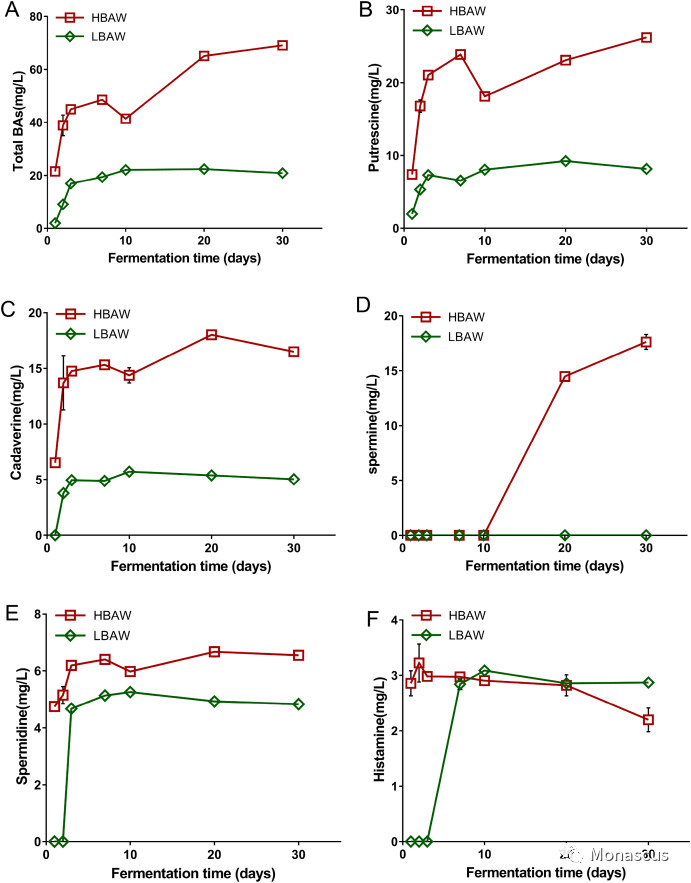
Fig. 2. Dynamic changes of total biogenic amines (A), putrescine (B), cadaverine (C), spermidine (D), spermidine (E) and histamine (F) during the traditional brewing of two types of Hongqu rice wine (LBAW and HBAW).
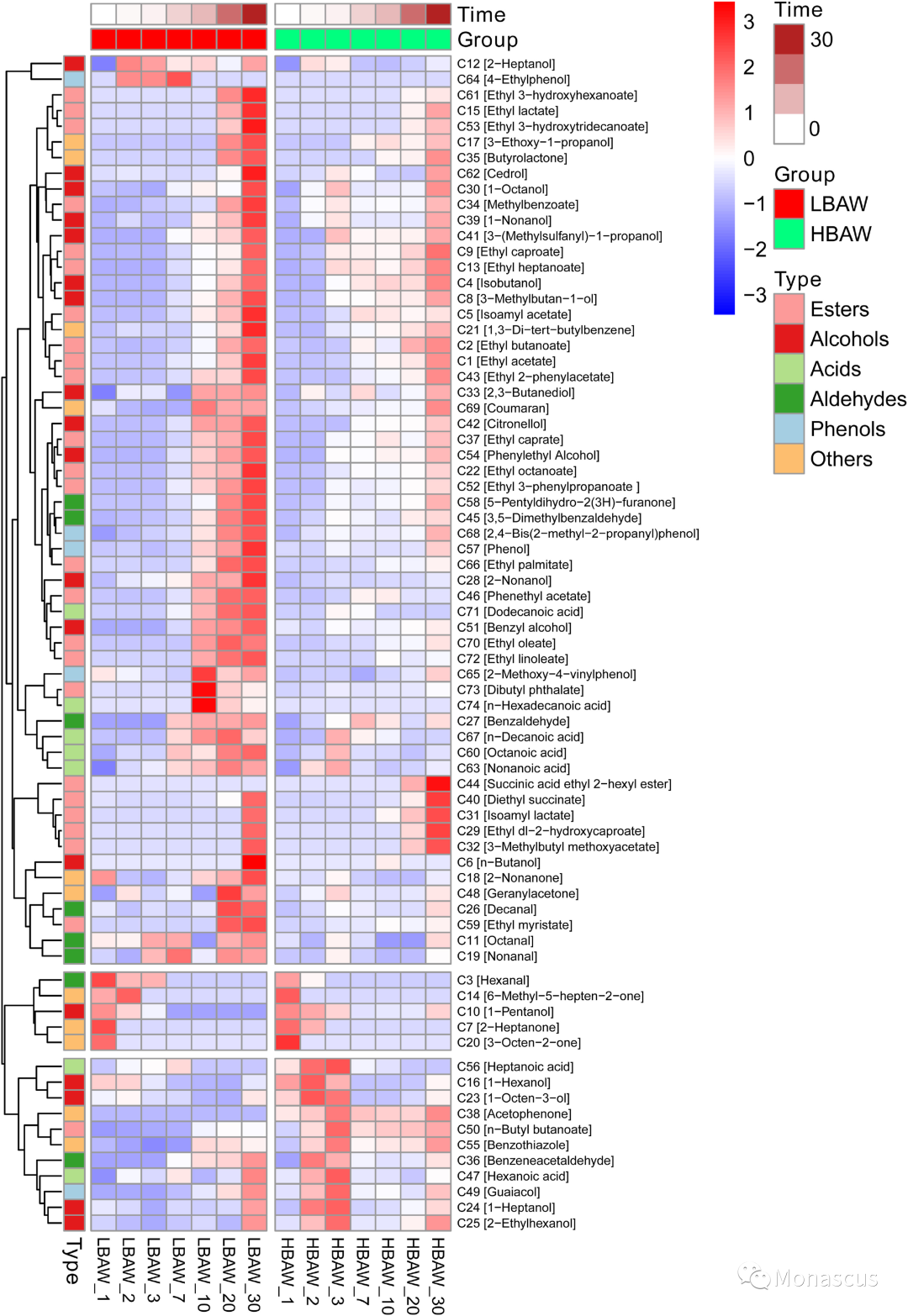
Fig. 3. Heat map analysis of the dynamic changes in volatile flavor components during the traditional brewing of two types of Hongqu rice wine (LBAW and HBAW).

Fig. 4. Principal component analysis (PCA) and Hierarchical clustering analysis (HCA) of volatile flavor components during the traditional brewing of two types of Hongqu rice wine (LBAW and HBAW). (A) PCA score plot. (B) PCA loading plot. (C) Hierarchical clustering diagram.
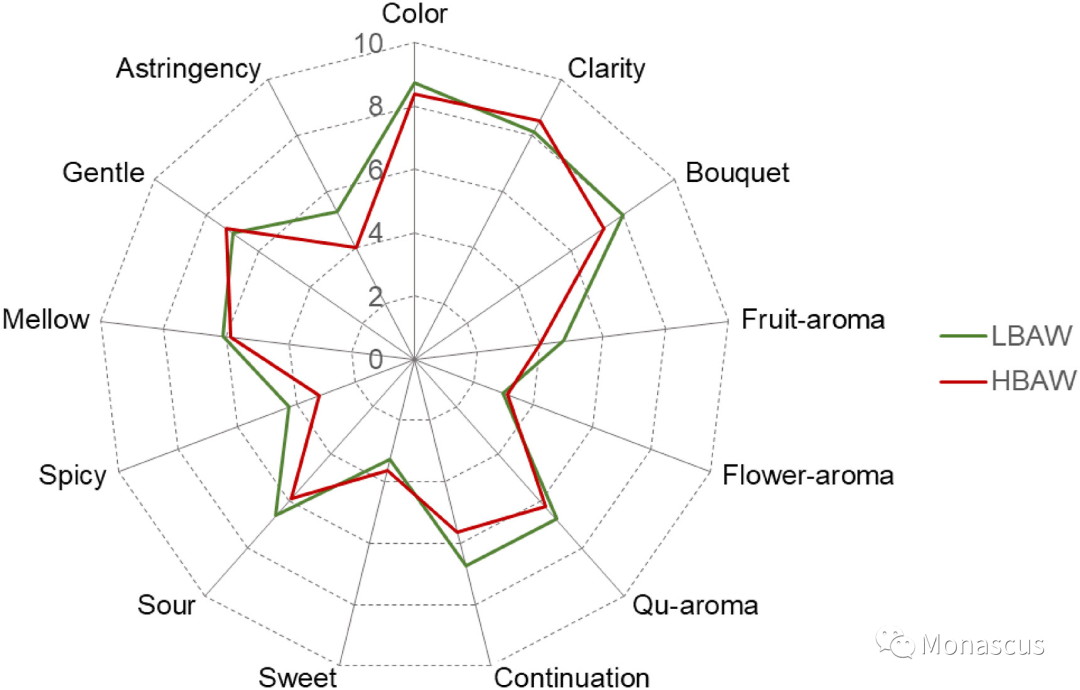
Fig. 5. Sensory profiles of the two types of Hongqu rice wine (LBAW and HBAW) with the ratings given by trained panel.
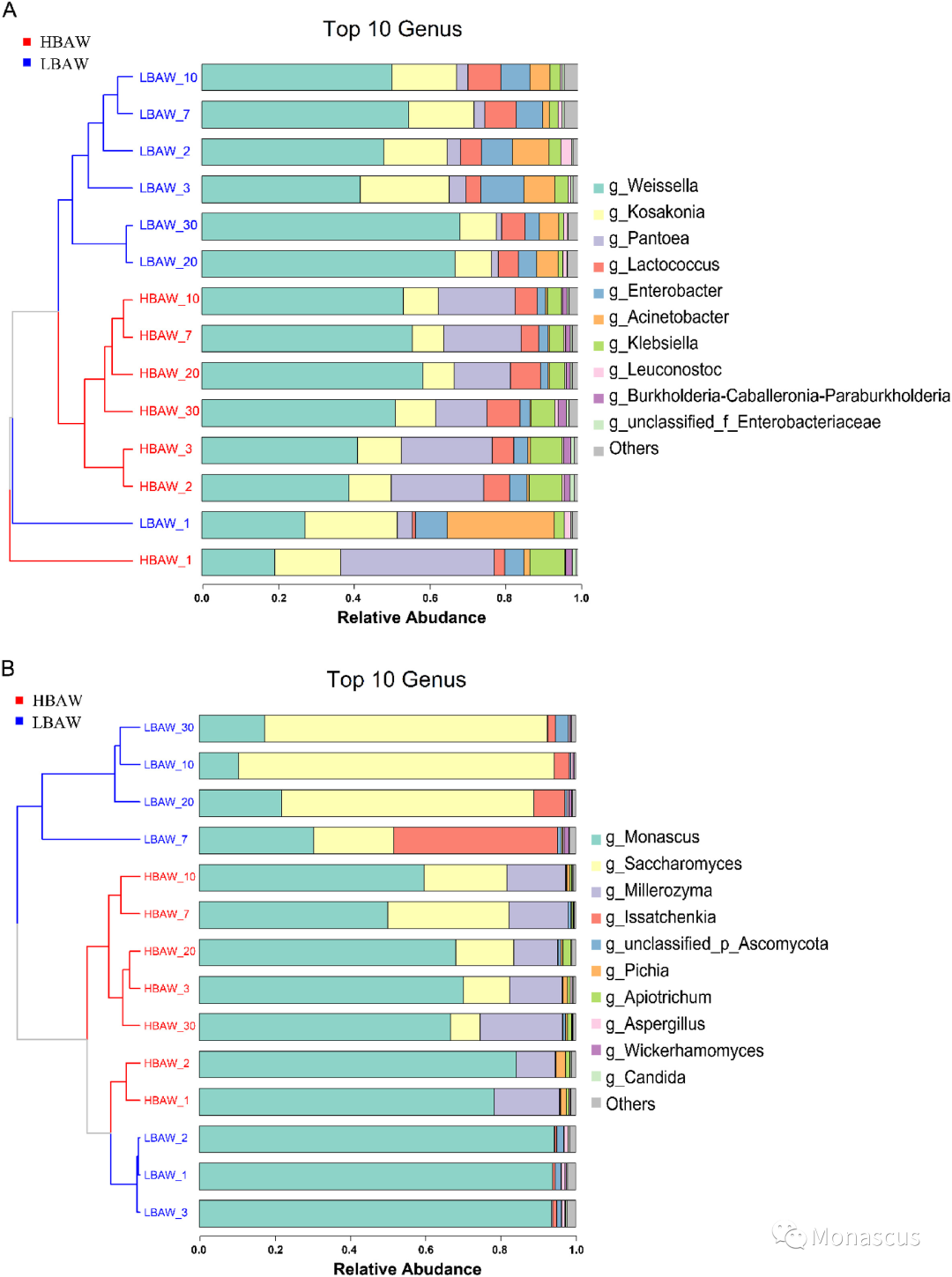
Fig. 6. Stacked histogram of the relative abundance of the predominant microbial taxa at the genus level. (A) Bacterial taxa. (B) Fungal taxa.
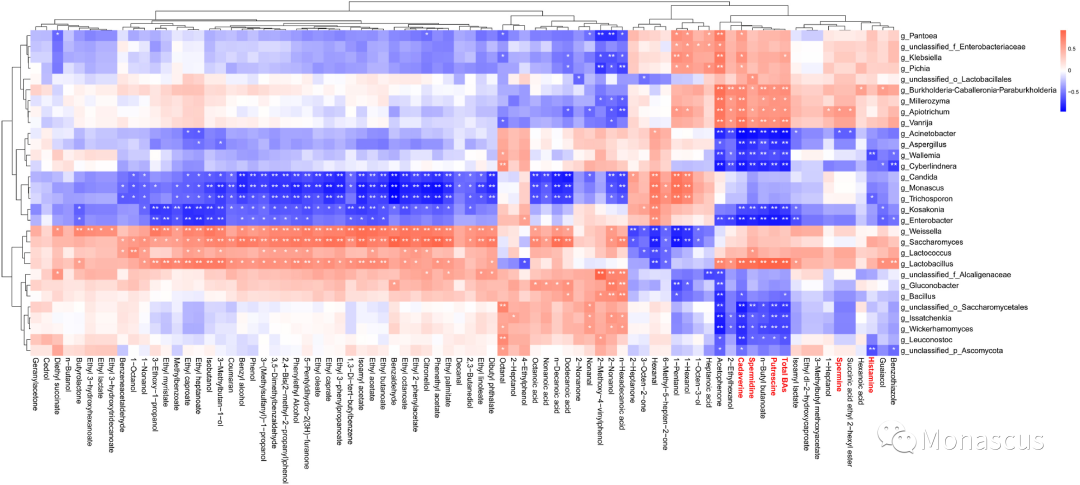
Fig. 7. Correlation analysis between the volatile components/biogenic amines and the predominant microbial taxa at the genus level.
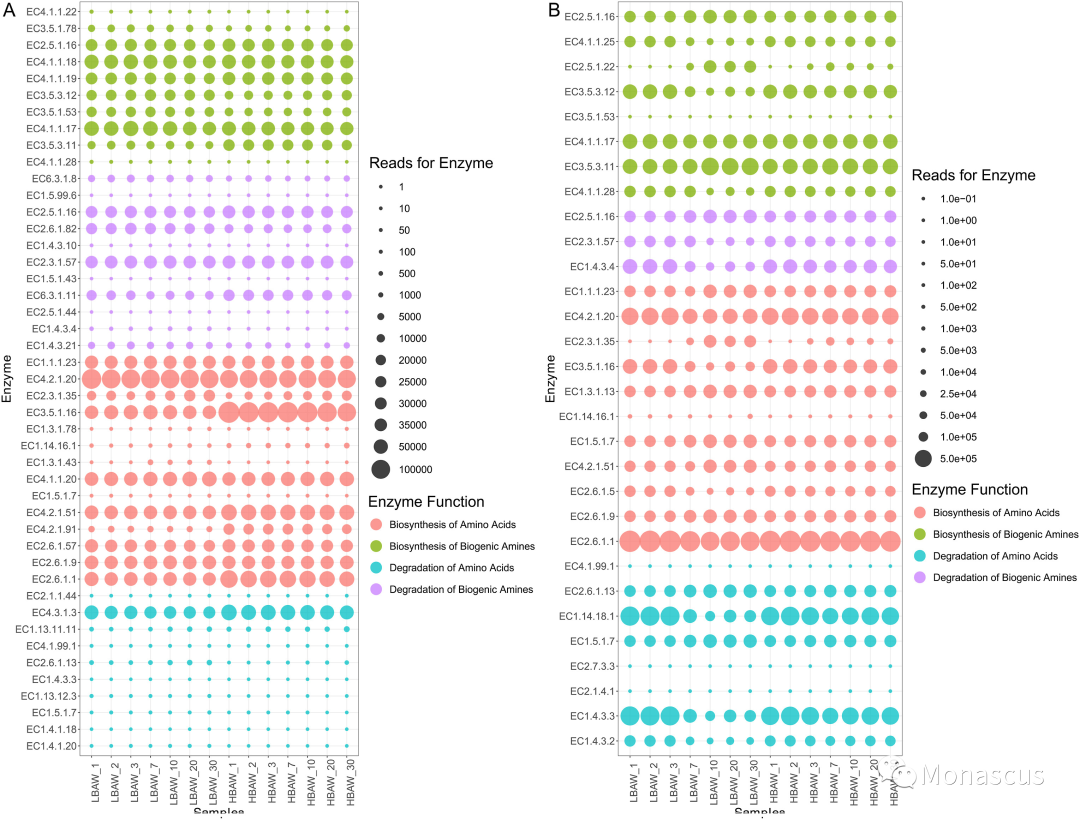
Fig. 8. Bubble chart of dynamic changes in the abundance of the enzymes closely related to the synthesis and decomposition of biogenic amines during the traditional brewing of Hongqu rice wine (LBAW and HBAW). (A) Bacterial community; (B) Fungal community.





